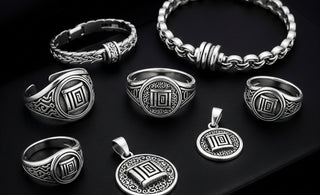
The relationship between silver and human health extends far beyond simple biocompatibility. This precious metal's unique molecular structure and chemical properties create an environment that naturally resists bacterial growth, reduces inflammation, and minimizes allergic reactions. For individuals who struggle with metal sensitivities or those simply seeking the healthiest jewelry options, silver offers compelling advantages that make it an exceptional choice for everyday wear.
Understanding Hypoallergenic Properties
The term "hypoallergenic" refers to materials that are less likely to cause allergic reactions, making them safer for prolonged skin contact. Silver's hypoallergenic nature stems from its chemical stability and low reactivity with human skin, particularly when compared to other common jewelry metals.
Chemical Stability:
Pure silver is chemically inert, meaning it doesn't readily react with other substances or release ions that could trigger allergic responses. This stability ensures that silver jewelry maintains its composition when in contact with skin, sweat, and environmental factors, reducing the likelihood of adverse reactions.
Low Allergenicity Rate:
Medical studies indicate that silver has one of the lowest allergenicity rates among jewelry metals. While some individuals may develop silver sensitivities over time, the incidence is significantly lower than reactions to nickel, copper, or other common jewelry materials.
Biocompatibility:
Silver's excellent biocompatibility makes it suitable for prolonged skin contact without causing irritation, inflammation, or other adverse reactions in most people. This biocompatibility has made silver a preferred material not only for jewelry but also for medical devices and dental applications.

The Science Behind Silver's Antimicrobial Properties
Silver's antimicrobial properties are well-documented in scientific literature, with research showing its effectiveness against bacteria, viruses, and fungi. These properties contribute to its hypoallergenic nature and overall skin health benefits.
Silver Ion Release:
When silver comes into contact with moisture, it releases positively charged silver ions (Ag+) that have powerful antimicrobial effects. These ions disrupt bacterial cell walls, interfere with cellular respiration, and prevent microbial reproduction, creating an environment hostile to harmful microorganisms.
Oligodynamic Effect:
Silver exhibits what scientists call the "oligodynamic effect"—the ability to exert antimicrobial effects at very low concentrations. This means that even small amounts of silver can provide significant antibacterial benefits without requiring high concentrations that might cause skin irritation.
Broad-Spectrum Activity:
Silver's antimicrobial properties work against a wide range of microorganisms, including both gram-positive and gram-negative bacteria, certain viruses, and various fungi. This broad-spectrum activity makes silver particularly valuable for maintaining skin health around jewelry contact areas.
Non-Resistance Development:
Unlike many antibiotic treatments, microorganisms rarely develop resistance to silver's antimicrobial effects. This consistent efficacy ensures that silver's protective properties remain effective over time.
Historical Medical Uses of Silver
Silver's medical applications have a rich history spanning thousands of years, with various cultures recognizing and utilizing its therapeutic properties long before modern science explained the mechanisms behind these effects.
Ancient Civilizations:
Ancient Greeks and Romans used silver containers to store water and food, unknowingly taking advantage of its antimicrobial properties to prevent spoilage and contamination. These early applications demonstrate humanity's long-standing intuitive understanding of silver's health benefits.
Traditional Medicine:
Traditional Chinese medicine has incorporated silver into various treatments for centuries, using it to address infections, inflammation, and other health concerns. Similar applications existed in Ayurvedic medicine and other traditional healing systems.
Pre-Antibiotic Medicine:
Before the development of modern antibiotics, silver compounds were commonly used to treat infections, wounds, and various medical conditions. Silver nitrate was particularly popular for treating eye infections in newborns and preventing surgical site infections.
Wound Care Applications:
Silver-based wound dressings and treatments were standard medical practice for treating burns, cuts, and other injuries. The metal's ability to prevent infection while promoting healing made it invaluable in medical settings.

Modern Medical Applications of Silver
Contemporary medicine continues to utilize silver's unique properties in various applications, validating ancient wisdom with modern scientific understanding.
Medical Devices:
Silver coatings are applied to medical devices such as catheters, surgical instruments, and implants to prevent bacterial colonization and reduce infection risks. These applications demonstrate silver's continued relevance in modern healthcare.
Wound Care Products:
Modern wound care utilizes silver in dressings, creams, and other topical treatments to prevent infection and promote healing. Silver-infused bandages and medical textiles provide sustained antimicrobial protection.
Dental Applications:
Dental amalgams historically contained silver, and modern dentistry continues to explore silver's applications in preventing dental infections and maintaining oral health.
Hospital Textiles:
Silver-treated fabrics are used in hospital linens, scrubs, and other textiles to reduce bacterial transmission and maintain hygienic environments in healthcare settings.
Sterling Silver vs. Pure Silver: Health Implications
Understanding the differences between pure silver and sterling silver helps inform decisions about jewelry choices for individuals with sensitive skin or specific health concerns.
Pure Silver (Fine Silver):
While pure silver offers maximum hypoallergenic properties, its softness makes it impractical for most jewelry applications. Pure silver contains 99.9% silver with minimal alloy additions, making it the most biocompatible option but also the most fragile.
Sterling Silver Composition:
Sterling silver contains 92.5% silver alloyed with 7.5% other metals, typically copper. This composition provides durability while maintaining most of silver's beneficial properties. High-quality sterling silver uses minimal amounts of problematic metals like nickel.
Alloy Considerations:
The choice of alloy metals in sterling silver significantly affects its hypoallergenic properties. Copper-based sterling silver is generally well-tolerated, while sterling silver containing nickel or other allergenic metals may cause reactions in sensitive individuals.
Quality Indicators:
Reputable manufacturers disclose their sterling silver compositions and avoid using known allergens in their alloy formulations. Look for hallmarks and certifications that indicate high-quality, hypoallergenic sterling silver.

Silver Jewelry for Sensitive Skin
Individuals with sensitive skin or metal allergies can benefit significantly from choosing silver jewelry, but certain considerations help optimize comfort and minimize reaction risks.
Skin Testing:
Before committing to silver jewelry, individuals with known metal sensitivities should conduct patch tests to ensure compatibility. While silver reactions are rare, personal sensitivities can vary.
Quality Selection:
Choosing high-quality sterling silver from reputable sources reduces the likelihood of allergic reactions. Avoid silver-plated jewelry or pieces containing unknown alloy compositions.
Proper Care:
Maintaining clean silver jewelry helps preserve its antimicrobial properties and prevents the buildup of substances that might cause skin irritation. Regular cleaning with appropriate silver care products is essential.
Gradual Introduction:
For individuals with severe metal sensitivities, gradually introducing silver jewelry allows for monitoring of any adverse reactions while building tolerance if compatibility is established.
Comparing Silver to Other Hypoallergenic Metals
Understanding how silver compares to other hypoallergenic jewelry metals helps inform material choices for different needs and preferences.
Platinum:
While platinum offers excellent hypoallergenic properties, it's significantly more expensive than silver and lacks silver's antimicrobial benefits. Platinum is best for those who prioritize long-term durability and have larger budgets.
Titanium:
Titanium provides outstanding biocompatibility and strength but lacks the antimicrobial properties of silver. It's an excellent choice for individuals who need extremely lightweight, strong jewelry but don't require silver's specific health benefits.
Gold Alloys:
High-karat gold alloys can be hypoallergenic, but lower-karat gold often contains problematic metals like nickel. Pure gold lacks silver's antimicrobial properties and is more expensive for equivalent quality.
Surgical Stainless Steel:
While generally hypoallergenic, stainless steel doesn't offer the antimicrobial benefits of silver and may contain trace amounts of nickel that could affect highly sensitive individuals.
The Role of Silver in Preventing Jewelry-Related Infections
Silver jewelry's antimicrobial properties provide specific advantages in preventing common jewelry-related health issues, particularly around piercings and areas prone to moisture retention.
Piercing Care:
Silver's antimicrobial properties make it an excellent choice for piercing jewelry during healing periods and for long-term wear. The metal's ability to inhibit bacterial growth reduces infection risks while promoting healthy healing.
Moisture-Prone Areas:
Areas where jewelry comes into contact with sweat or moisture benefit from silver's antimicrobial effects. Rings, bracelets, and necklaces in these areas are less likely to harbor harmful bacteria when made from silver.
Skin Fold Concerns:
Jewelry worn in skin folds or areas with limited air circulation benefits from silver's ability to prevent bacterial and fungal growth that could lead to skin infections or irritation.
Scientific Research on Silver's Health Benefits
Modern scientific research continues to validate and expand our understanding of silver's health-related properties, providing evidence-based support for its use in jewelry and medical applications.
Antimicrobial Studies:
Numerous peer-reviewed studies have confirmed silver's broad-spectrum antimicrobial activity, documenting its effectiveness against various pathogens while establishing safety profiles for human contact.
Biocompatibility Research:
Medical research has extensively studied silver's biocompatibility, establishing its safety for prolonged human contact and identifying the rare instances where sensitivities might develop.
Wound Healing Studies:
Research into silver's effects on wound healing has shown that it not only prevents infection but may also promote faster healing through various biological mechanisms.
Long-term Safety Data:
Long-term studies of silver exposure through jewelry wear and medical applications have established safety profiles that support its continued use in health-conscious applications.

Caring for Silver Jewelry to Maintain Health Benefits
Proper care of silver jewelry ensures that its hypoallergenic and antimicrobial properties remain effective while preventing tarnishing and degradation that could affect its health benefits.
Regular Cleaning:
Gentle, regular cleaning removes accumulated oils, sweat, and environmental contaminants that could interfere with silver's antimicrobial properties or cause skin irritation.
Appropriate Storage:
Proper storage in dry, clean environments prevents tarnishing and contamination that could affect the jewelry's skin compatibility and health benefits.
Avoiding Harsh Chemicals:
Harsh cleaning chemicals or exposure to chlorine, sulfur, and other reactive substances can damage silver's surface and potentially create skin irritants.
Professional Maintenance:
Professional cleaning and maintenance help ensure that silver jewelry maintains its optimal condition for both aesthetic and health benefits.
Future Developments in Silver Health Applications
Ongoing research continues to explore new applications for silver's health properties, potentially expanding its use in jewelry and medical applications.
Nanotechnology Applications:
Silver nanoparticles are being investigated for enhanced antimicrobial effects and new delivery methods that could improve silver's therapeutic applications.
Smart Materials:
Research into smart materials that can release silver ions in response to specific conditions may lead to more targeted therapeutic applications.
Combination Therapies:
Studies exploring silver in combination with other antimicrobial agents or therapeutic compounds may yield new treatment approaches.
Environmental Health:
Research into silver's role in environmental health applications, such as air and water purification, may indirectly benefit those who wear silver jewelry.
Conclusion: Silver's Enduring Health Legacy
Silver's remarkable combination of hypoallergenic properties, antimicrobial effects, and biocompatibility makes it an exceptional choice for health-conscious jewelry wearers. The scientific evidence supporting silver's beneficial properties, combined with thousands of years of traditional use, provides compelling reasons to consider silver jewelry for both aesthetic and health benefits.
As our understanding of silver's health properties continues to evolve through ongoing research, its applications in jewelry and medical fields will likely expand further. For individuals seeking jewelry that combines beauty with health benefits, silver offers a time-tested solution that addresses both aesthetic desires and practical health considerations.
The choice to wear silver jewelry represents more than a fashion decision—it's an investment in personal health and comfort that can provide benefits for years to come. Whether you're dealing with metal sensitivities, seeking antimicrobial protection, or simply wanting the peace of mind that comes with wearing biocompatible materials, silver jewelry offers unique advantages that make it worthy of serious consideration in any jewelry collection.

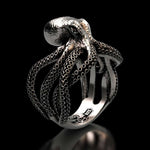 Rings
Rings
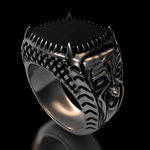 Gemstone Rings
Gemstone Rings
 Pendants
Pendants
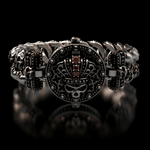 Bracelets
Bracelets
 Keycaps
Keycaps
 Earrings
Earrings
 Chains
Chains
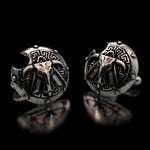 Cufflinks
Cufflinks
 Lapel Pins
Lapel Pins
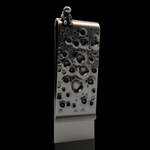 Accessories
Accessories
 Men’s
Men’s
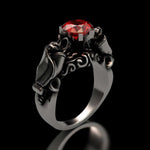 Women’s
Women’s
 Military
Military
 Animal
Animal
 Skull & Biker
Skull & Biker
 Mythology
Mythology
 Religious
Religious
 Zodiac
Zodiac
 Movie & Game
Movie & Game
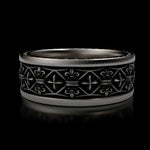 Wedding Band
Wedding Band

